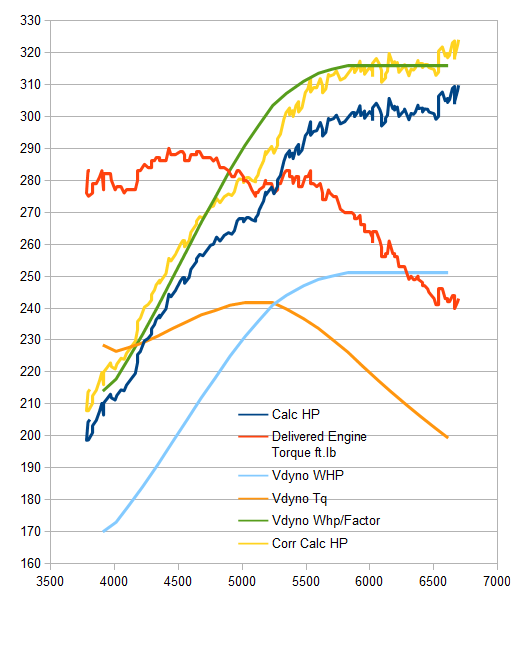Topics:
- Platform names
- Cadillac XT5 — Does Cadillac need a high performance Battery electric vehicle Tesla Competitor?
- Intercooler coolant temperature control
- Programming VVT on the Cadillac LC3
After the chat I redid the analysis of cd 0.31 vs cd 0.33 and determined only 1 whp delta, but playing with loading different profiles showed me something was wrong with my default profile. Here is a comparison showing Tune 6F if the XLR was 0.31 vs 0.33 cd:
What we see here is the Tune 6F at 0.31 coefficient of drag in red, and the same data except CD 0.33 in Blue. The blue is 1 whp better. All other setting identical.
Note that with the profile fix or re-ordering, Tune 6F is now registering at 252 whp not 241 whp with the previous default profile. Unfortunately, now that I reloaded the profiles to get the CD test to work, I can’t ‘go back’ to the broken default profile to understand what was different about it.
Additionally, I created this graph to compare Virtual Dyno output to calculated torque & hp:
The blue and red lines are the calculated torque and hp. The high yellow line is the corrected hp for atmospheric conditions. The orange and light blue lines are the virtual dyno w-torque and whp. The Green line is the Virtual Dyno line with a factor applied to move it up to the calculated hp. The green line is a smoothed line (average of averaged of values) but appears to be a good fit for the calculated hp curve. This surprises me as I was thinking that the virtual dyno and the calculated hp frequently do not follow one another based off of the detailed data.
There is still some additional losses in both sets of data from running the test in 2nd gear instead of a 1:1 gear. The XLR doesn’t have a perfect 1:1 gear, but testing in 2nd is a trade between smooth data, safe testing, and mechanical losses.







